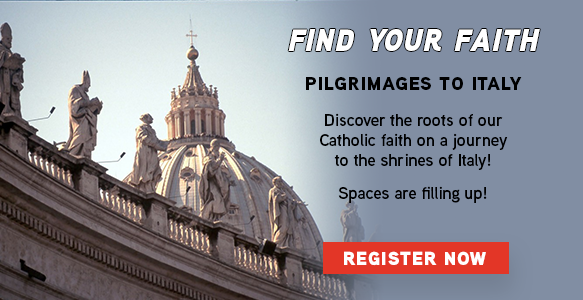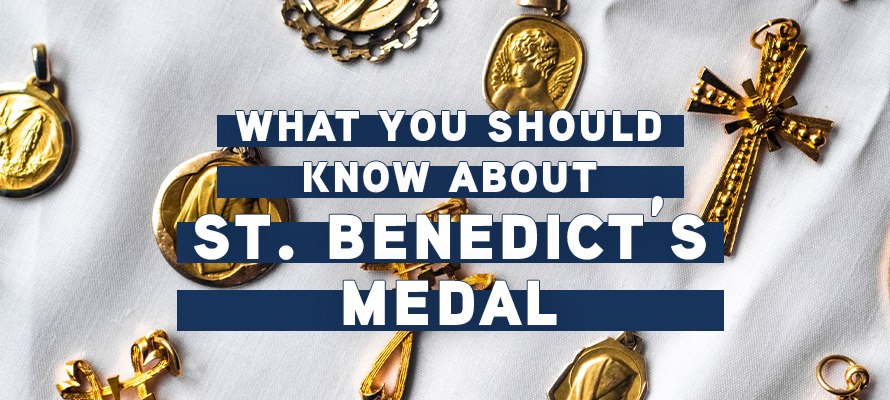
July 11th is the feast of St. Benedict of Nursia, a first century saint whose works still have an effect on the world today.
Born in 480 into a life of wealth and nobility, Benedict left it all behind at the age of 20. Studying in Rome, he was not pleased with his life there and decided to pursue something greater. He departed Rome and began to live the life of a hermit in the nearby Enfide. There he lived in a secluded cave, his only visitor a local monk, who would bring bread to sustain him.
For three years Benedict lived life in seclusion, growing in his spirituality and learning more about his human nature. Not long after, the abbot of the local monastery passed away, and Benedict was asked by the monks to take over the position. Knowing that long ago the monastery had relaxed their rules and guidelines, Benedict replied that they wouldn’t be happy with him as their leader, as he lived a very strict and regimented life. They proceeded in their requests, and before long, Benedict found himself living within the monastery.
It was from this point on that St. Benedict started to develop and experience the things that would become his lasting legacy – one of which being the Medal of St. Benedict, a devotional item that is popular for the faithful today. Though common amongst Catholics, many are curious about the strange jumble of letters and are unaware of the great symbolism and meaning contained within this small sacramental.
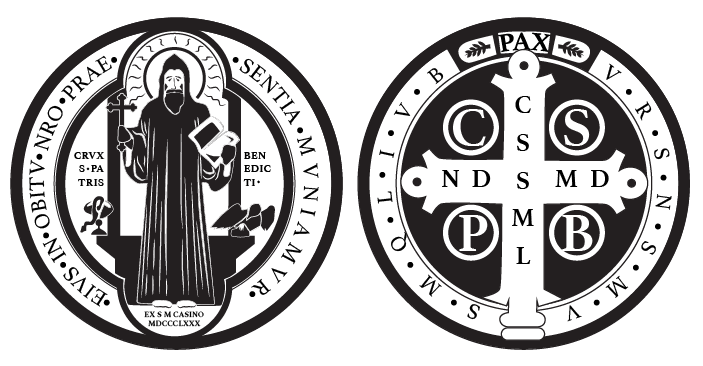
It is not quite certain when the medal was first created, though it has been around for centuries. The one that is most common today is the jubilee medal – this special design of the medal was cast for the 1400th anniversary of St. Benedict’s birth. The medal and the prayers engraved upon it offer special protection from evil and display some miraculous moments in Benedict’s life where he himself was saved from untimely death.
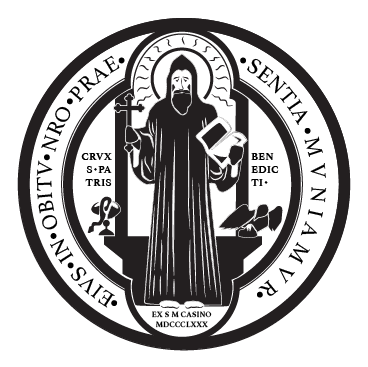
The medal is circular in shape and contains two distinct sides. On the front side in the center, you find St. Benedict wearing his habit. In his right hand he is holding the cross, the symbol of salvation and the defeat of death. In his left hand rests an open book, the Rule of St. Benedict. The Rule contains Benedict’s guidelines to live a regimented and holy life, which many monks disliked after years of living a lax and lackadaisical life.
Beneath the cross rests a broken chalice with a serpent falling out of it. This represents an attempt at taking St. Benedict’s life through the hands of his disgruntled monks. Angered by their new lifestyle, a few tried to murder Benedict by serving him poisoned wine. After blessing the wine with a sign of the cross, the chalice broke in half, sparing Benedict from an early death. Directly across from the broken chalice is a raven with a piece of bread in its claw. This too was an attempt at murder; served poisoned bread at one meal, a bird flew in through a window and took away the bread before Benedict could put it to his lips, dropping it where it could not be eaten.
Surrounding this imagery are a multitude of words and letters – all with significant meaning:
Crux Sancti Patris Benedicti – The cross of our Holy Father Benedict
Eius in obitu nostro praesentia nuniamur – May we be strengthened by his presence in the hour of our death
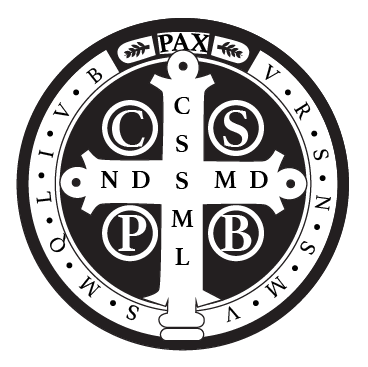
On the back side, we find even more words and letters, which make up the first letters of an exorcism prayer.
PAX – Peace
CSPB – Crux Sancti Patris Benedicti (The cross of our Holy Father Benedict)
CSSML – Crux Sacra Sit Mihi Lux (May the holy cross be my light)
NDSMD – Numquam Draco Sit Mihi Dux (May the dragon never be my overlord)
VRS – Vade Retro Satana (Be gone, Satan)
NSMV – Numquam Suade Mihi Vana (Never tempt me with your vanities)
SMQL – Sunt Mala Quae Libas (What you offer me is evil)
IVB – Ipse Venena Bibas (Drink the poison yourself)
Throughout the centuries, the intercession of St. Benedict through this medal has been attributed to many great works of healing and protection. To this day, many religious and lay people wear this medal on their person or attached to a rosary – a tradition that you may want to consider this coming feast day.


